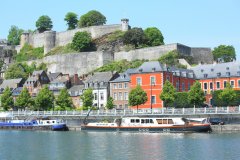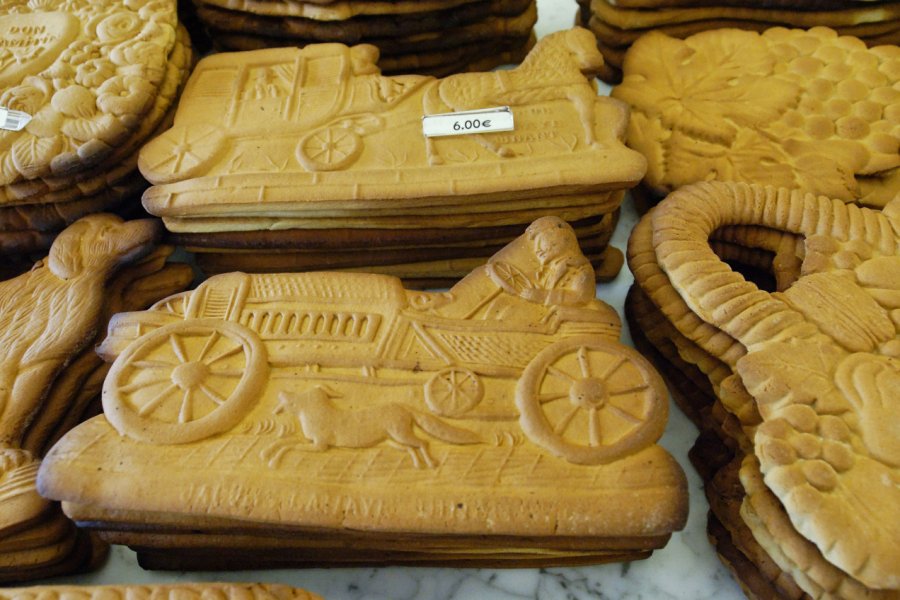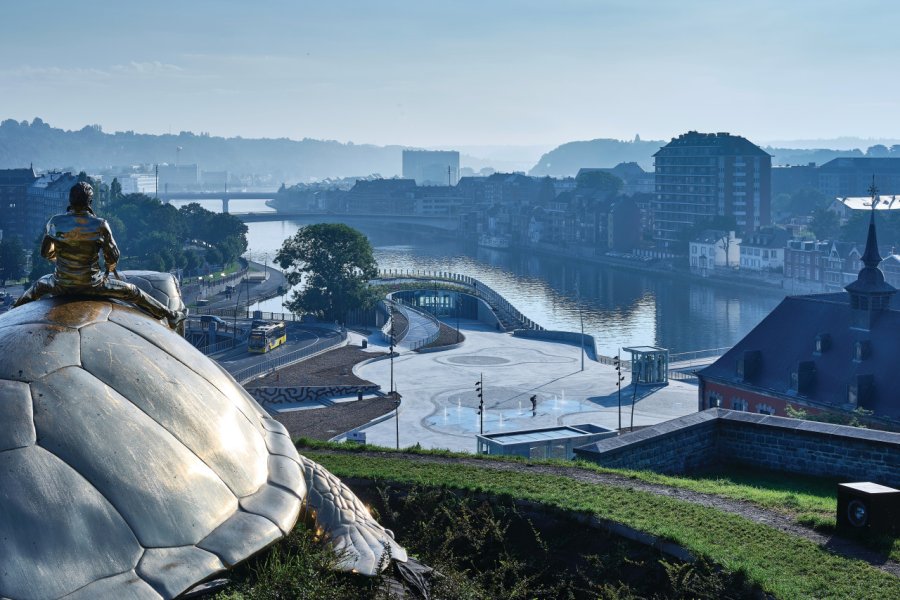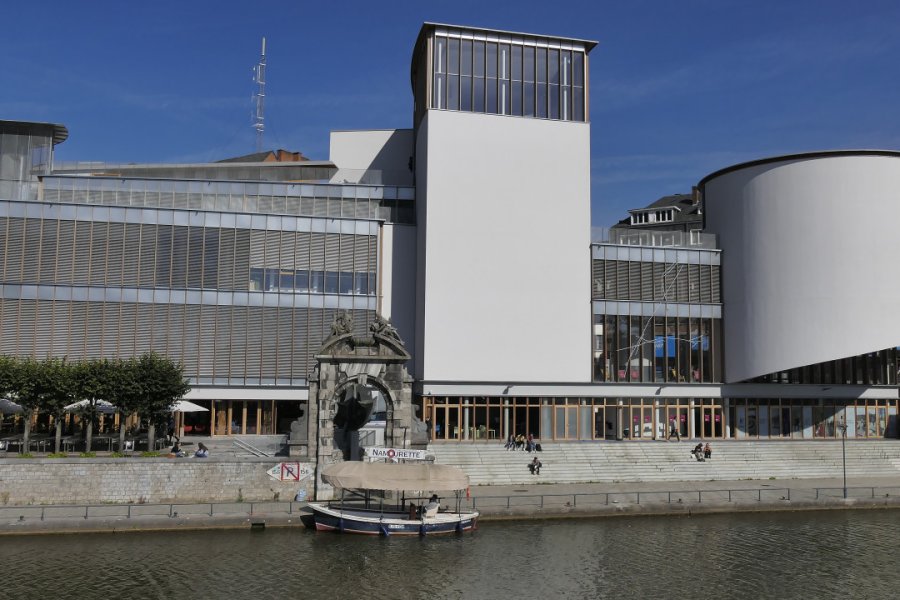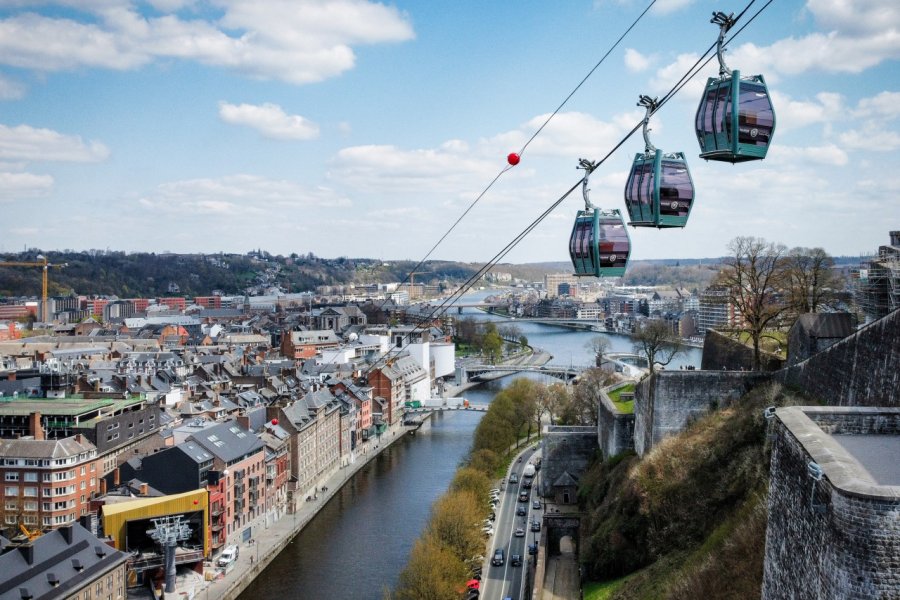Travel guide Namur
Situated some 60 km from Brussels, Namur is the only city in Wallonia to be located at the confluence of a major river: the Meuse and the Sambre. The capital of Wallonia boasts an extremely valuable historical, architectural, cultural and natural heritage, and was, thanks to its enviable location, one of the main strongholds of Northern Europe. The first traces of settlement date back to Roman times, but Namur only became a city in the Middle Ages.
Today, Namur is home to 25 communes and almost 111,000 inhabitants. The city can be explored on foot, with your nose in the air to observe the many private, public and religious buildings of interest, or to stroll along the banks of the Sambre and Meuse rivers. As part of the commemoration of the First World War, the fortified position of Namur was upgraded with the partial opening to the public of the Emines fort and the installation of a signposting system that more broadly integrates the fortified positions of Antwerp and Liège. In Namur, an educational panel near each fort explains their purpose, how they functioned, their actual use in 1914 and more. A signposted trail between the Cognelée and Marchovelette forts also allows visitors to explore the area on foot or by bike.
Local specialities include the famous Wépion strawberry, "Biétrumé" butter, chocolate and hazelnut sweets, the famous Bister mustards, Flawinne kisses with mocha and marzipan, and petit-gris snails, a fun local symbol. In the heart of the citadel, Namur's perfumes are born and matured in the Atelier de Parfumerie Guy Delforge.
What to see, what to do Namur?
-
Book an activity
-
Customized travel
- Addresses to visit Namur
Weather at the moment
Suggested addresses Namur
Travel Namur
-
Find a hotel
-
Car Rental
-
International e-SIM package
-
Find a local agency
Find unique Stay Offers with our Partners
Discover Namur
In 1986, Namur won the title of Walloon capital from its "big" neighbors, Liège and Charleroi. Delighted? There was no real rivalry because the final decision was more the result of a political consensus and Namur's central geographical position in Wallonia than any dominant role. Over time, Namur has really shaped itself as a capital. In the center, its pedestrian streets, its varied shops, its tempting bistros and restaurants, its art museums and its cathedral. In Jambes, the administrative city, the Elysette (seat of the Walloon government) and the stream of commuting civil servants. The Enjambée, a pedestrian-bicycle bridge, links the two banks since 2020. On its rocky outcrop, the Citadel overlooks the Meuse, the Sambre and the Walloon Parliament, which has been located since 1998 just a stone's throw from the Grognon (now called "Confluence"). Since spring 2021, it can be reached by a brand new cable car.
Pictures and images Namur
The 12 keywords Namur
1. #Abbayes
Cistercian or Benedictine, of monks or nuns, the abbeys were numerous in the region of Namur. Always occupied or burned down during the French Revolution, of various architectural styles, the monasteries are important witnesses that have shaped the local history. Many of them have become major actors of the tourist heritage.
2. #Capital

Namur is the historical capital of the province that bears its name. Today, it is best known for being the capital of Wallonia since 1986. The regionalised Belgium has established the seat of the Walloon government and parliament there. Thirty-five years and major urban renovations later, the city's status can now be seen on the street.
3. #Castles

The county of Namur in the past occupied almost the contours of the present province. It was in strategic competition with the principality of Liège, which had lands outside its city. The duchy of Brabant was close by. Rivalries between lords were strong in the region: as many castles were visible or accessible to tourists
4. #Citadelle
Former fortress of the Counts of Namur, strategic position and important stronghold in Europe, the Citadel is today the first tourist site of the city and a major attraction in Wallonia. It has many points of interest and since spring 2021, has found a brand new cable car that links it to the city.
5. #Confluence
From Maubeuge and Charleroi, the Sambre meets the Meuse at a place called Le Grognon. After four decades of dithering and wandering, the site has been redeveloped from top to bottom and inaugurated in September 2021. Once built up, the site had become a canker and then a parking lot. Now, Confluence is an agora as in Roman times.
6. #Hunters
In Namur, a stilt walker is a participant in a joust, perched on stilts. This tradition, recognized by Unesco since 2021, has existed for 600 years and pits two companies against each other. The Mélans (yellow and black) represent the old city. They face the Avresses (white and red) from the outer districts
7. #Snail
Universal symbol of slowness, the snail is also the one of Namur, its inhabitants being regularly mocked for their caricatural phlegm. A legend drawn from the situation of the brotherhoods associates the snails with the city since the Middle Ages. As if to support this character trait, the snail is also raised for its meat in the region
8. #Félicien Rops
Born in Namur, the controversial artist made his career in Paris. His hometown pays a permanent tribute to Félicien Rops, one of the most sulphurous painters, aquafortist, draftsman or illustrator of his generation. His erotic, licentious even, terribly daring art for his time (XIXᵉ century) is highlighted in a former mansion.
9. #Meuse

Namur is a daughter of the Meuse. Before entering the city, the river has carved a valley lined with rocks where it cuts into the Condroz plateau (the Upper Meuse). The river runs along the rock on the eastern side, bordering Jambes on the right bank. Historical floods in 1740 and 1925-1926. The city center is bordered by its tributary, the Sambre.
10. #Renewal
"Waking up the Sleeping Beauty" was the will of Mr. Prévot, mayor since 2012. The mission is underway with top-notch architectural achievements that put Namur on the map of Belgian cities on the move. Citadel, Grand Manège, Confluence, train station, Enjambée, Halle al'chair, cable car, Pavilion... Nice cultural identity !
11. #Teleferic
After 40 years of good and loyal service, the Namur cable car stopped all activity in 1997. In 2013, the mayor Maxime Prévot ordered a feasibility study for the construction of a new cable car. Inaugurated in May 2021, it links the city to the citadel in 4 minutes. It is composed of four trains of three cabins.
12. #Wallos

The Fêtes de Wallonie (the Wallos) celebrate regionalism à la belge and above all are the occasion for popular festivities in various towns in Wallonia. The most emblematic are in Namur on the 3ᵉ weekend of September, since 1923. Pekèt (genever) flows freely, a mass in Walloon and stilt-walker fights are on the program.
You are from here, if...
You find the comparison with a "Liégeois" or a "Carolo" (Carolorégien = inhabitant of Charleroi) useless.
You are not trying to imitate the Walloon accent. You have acquired it... or not.
You go to at least one festival or folklore event every summer.
You like to have a drink on the terrace of the "Place du Vieux".
You can't resist the temptation of a cone of French fries to eat in the street. Or an opinion, hot or cold.
You look forward to the stilt-walkers' jousts or the mass in Walloon.
You use and know the meaning of the words disbauchî, djondu and keûr di bûre.
You have already tasted at least ten kinds of pékèt at the Walloon Festivals.
You are proud to live in a capital city when most Belgians still think that there is only Brussels.
You smile when a tourist claims he drank a beer when it was a Heineken.
You know the first verse of the Bia Bouquet by heart

